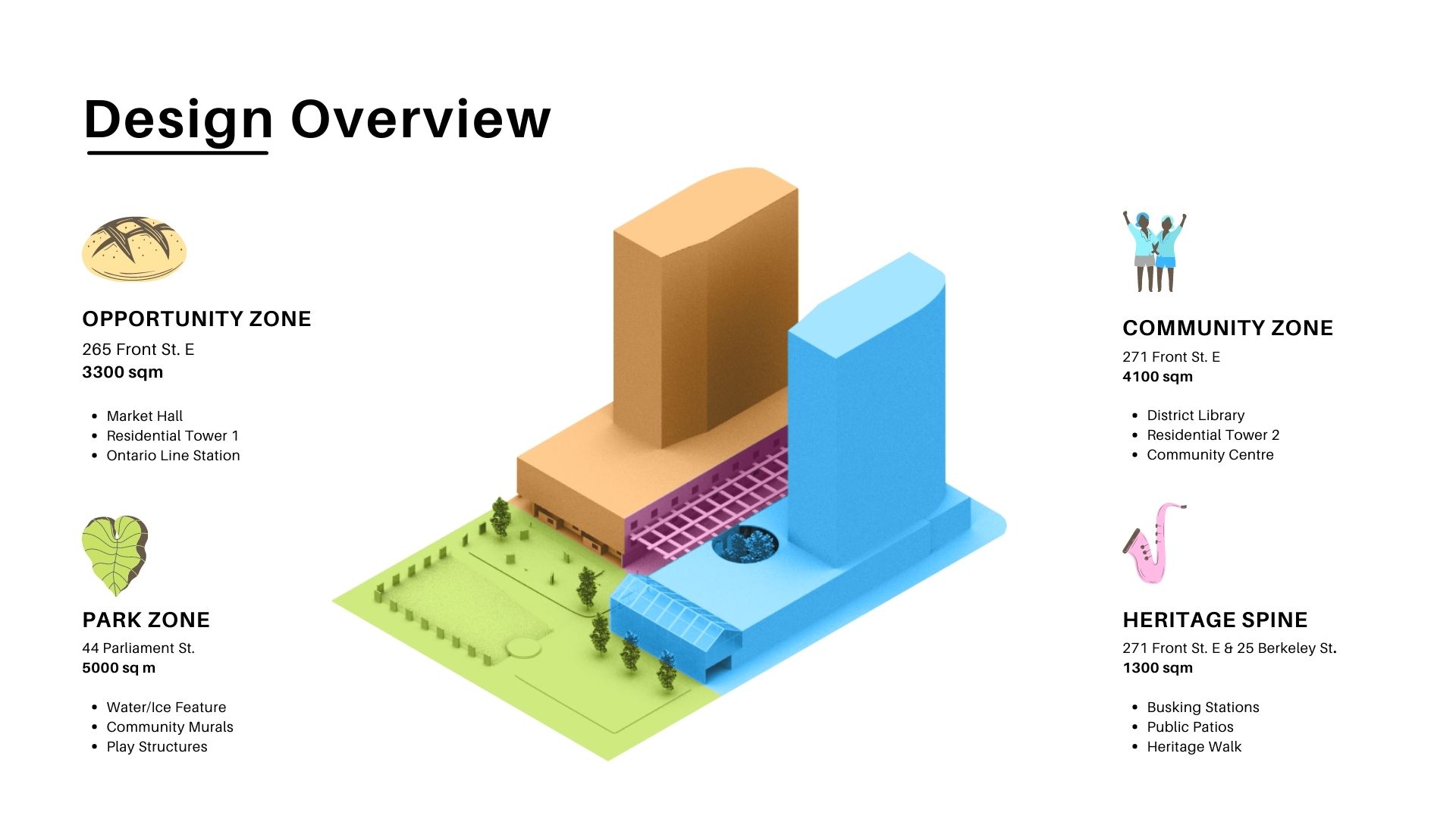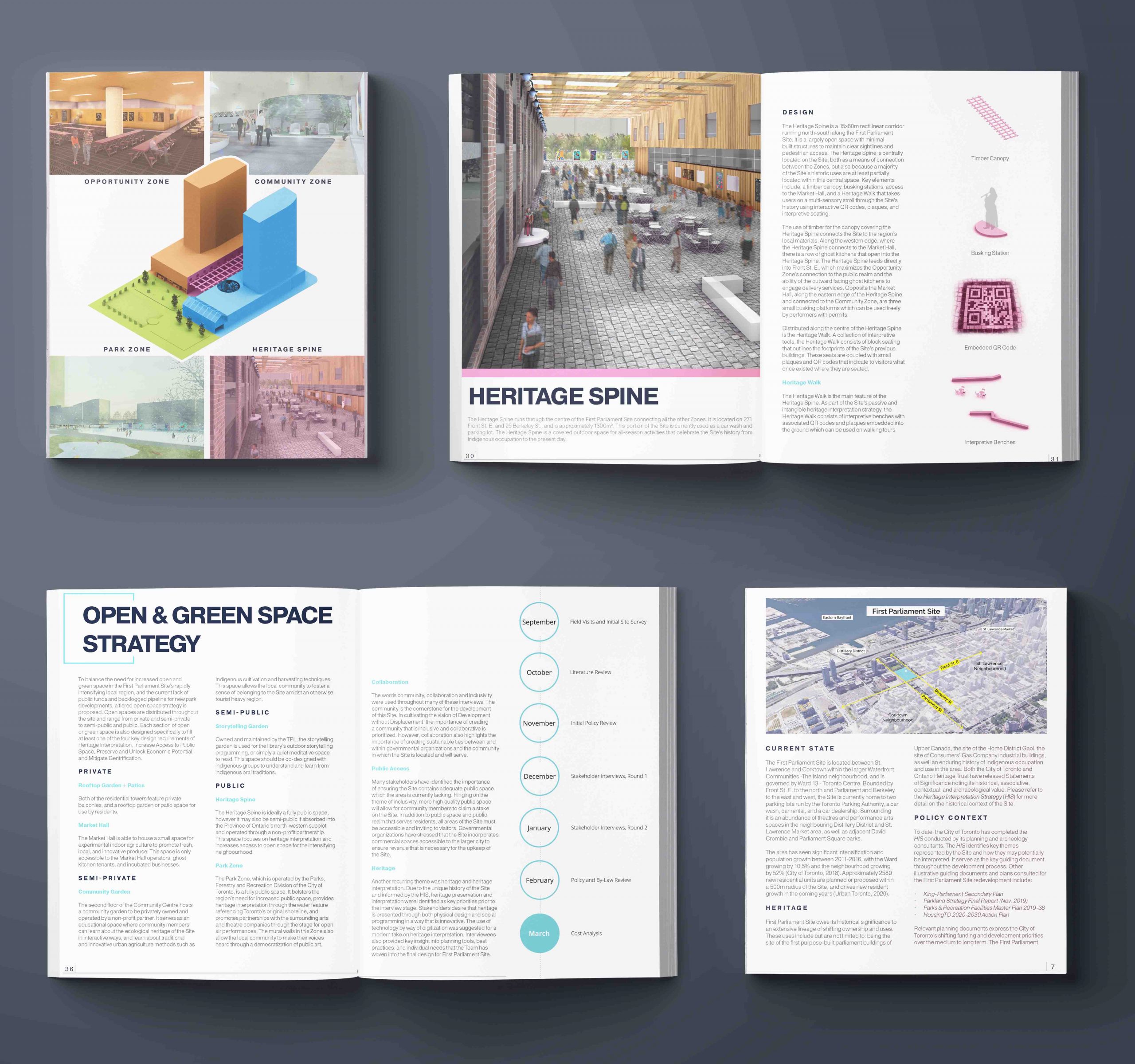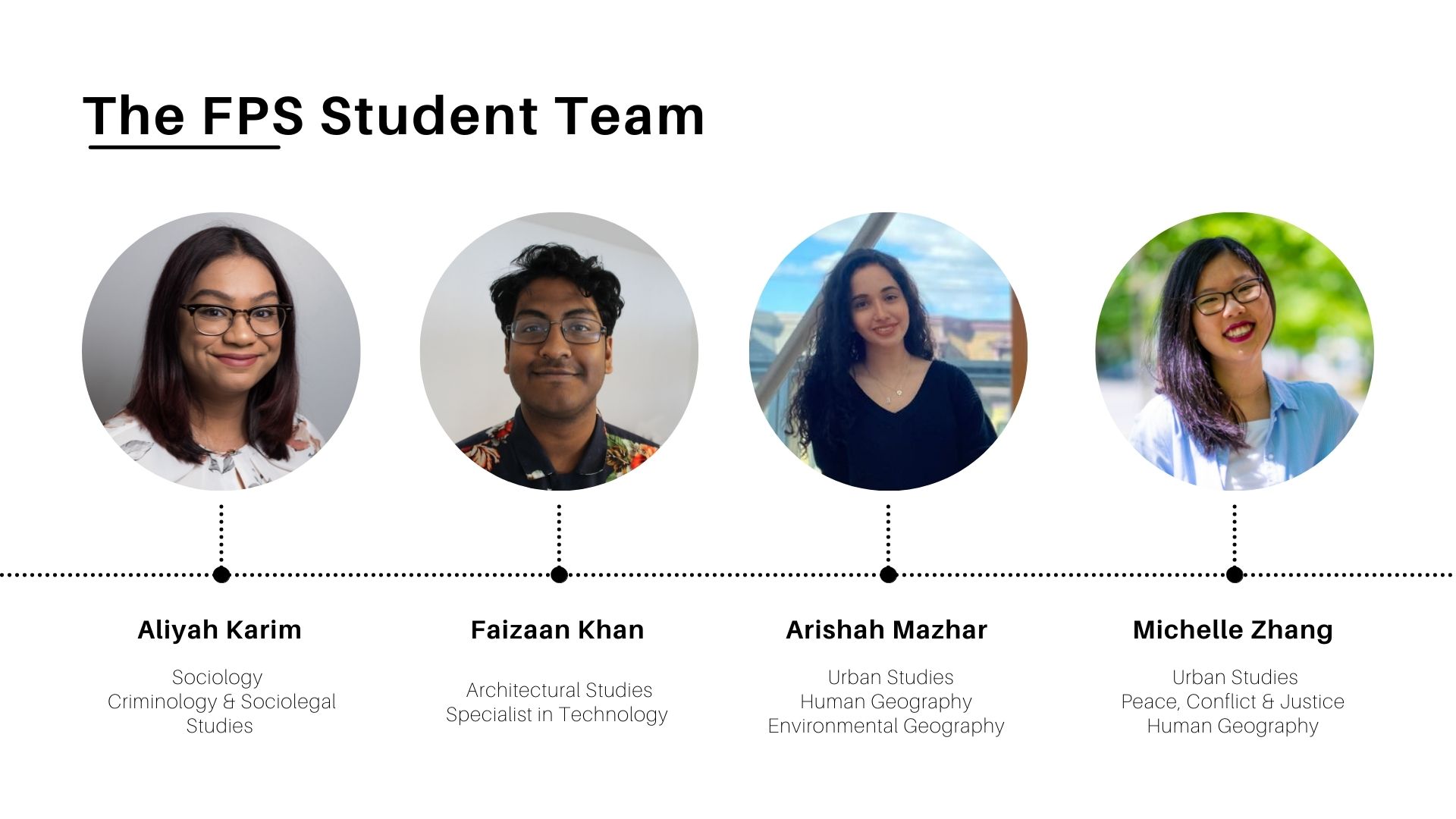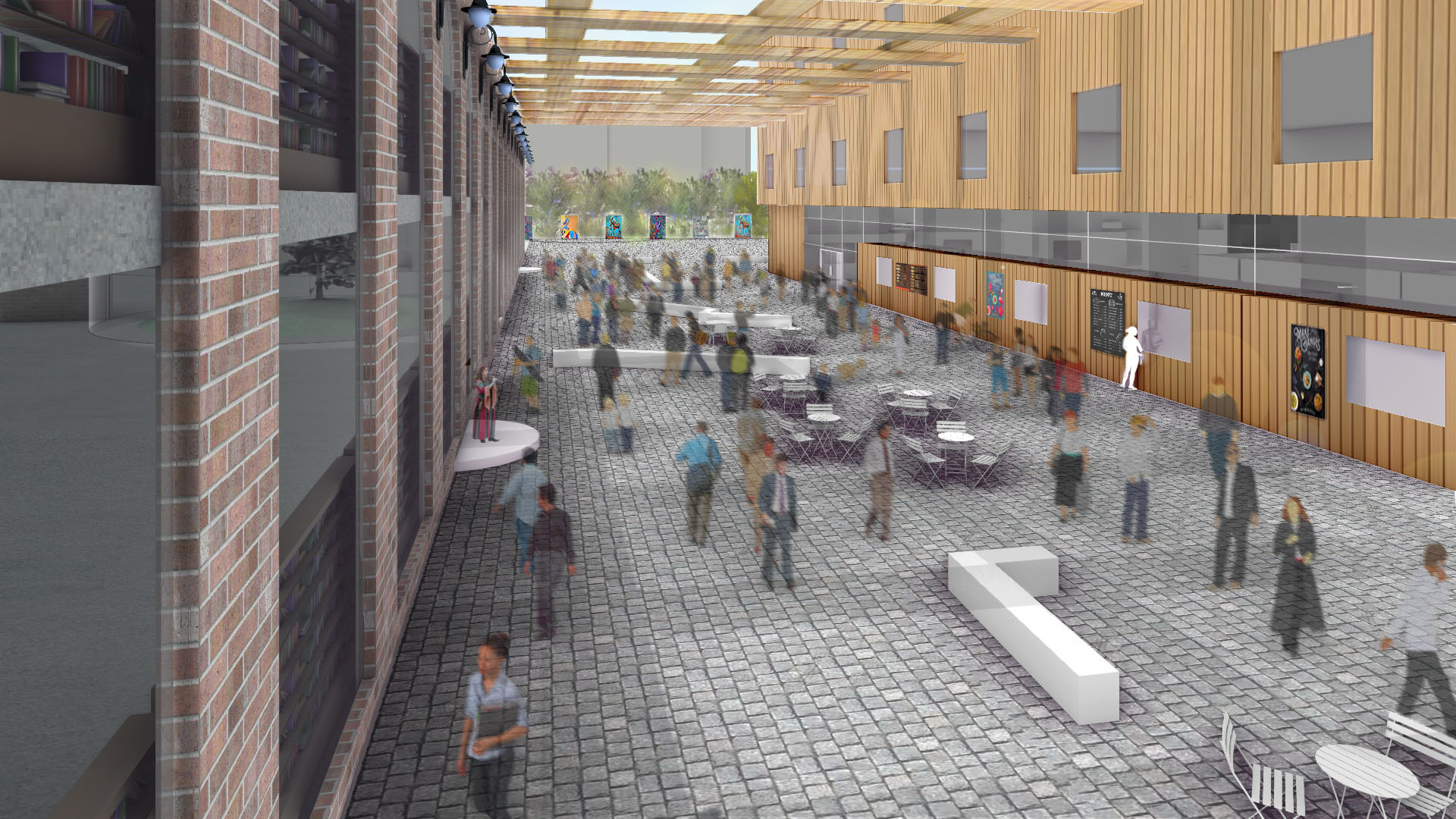To answer these questions and more, CreateTO brought together a team of students across architecture, planning, and sociology to imagine a plan for the future of the site. A plan that could inspire local communities to rally around a rare and valuable piece of public land, a plan that could foster political collaboration, and a plan that could bridge past, present, and future.

The First Parliament Site carries historic significance as the site of longstanding Indigenous activity, Upper Canada’s first purpose-built parliamentary buildings, the Home District Gaol, and the Consumers’ Gas Company industrial buildings. The four lots that make up the Site are currently owned by the City of Toronto through CreateTO and the Province of Ontario through the Ontario Heritage Trust. The Site now houses two parking lots operated by the Toronto Parking Authority, a car dealership, a car rental, and a car wash.

3 themes form the basis of this proposal and are derived from a series of interviews with key stakeholders: community, heritage interpretation, and economic vitality. The Concept Proposal is framed through these three parameters, known collectively as Development without Displacement.

Using this principle, the Site is divided into four zones: an Opportunity Zone to the north-west, a Community Zone to the north-east, a Park Zone to the south, and a Heritage Spine down the middle, linking the four zones.









The team’s research, concept designs, implementation plans, and pro forma budgets were compiled in a comprehensive public-facing report. You can follow the link above if you’d like to take a look.
As part of the Multidisciplinary Urban Capstone Project, this was a collaborative effort and I’d like to recognize my teammates, the School of Cities, Professor Matti Siemiatycki, and our client SoMei Quan from CreateTO.

Visit firstparliament.to to learn more about the ongoing planning process and Provincial expropriation. The City needs your support to retain a valuable and historic piece of land.


